Cast Iron Steam Baseboard Information
The vapor system differs from the low-pressure system only in the type of air valve used. The trick here is to convert the baseboard to a two-pipe application, even if the system is single-pipe. This can be accomplished in several ways, as illustrated in the drawings below.
2 Pipe to Dry Return w/Steam Trap
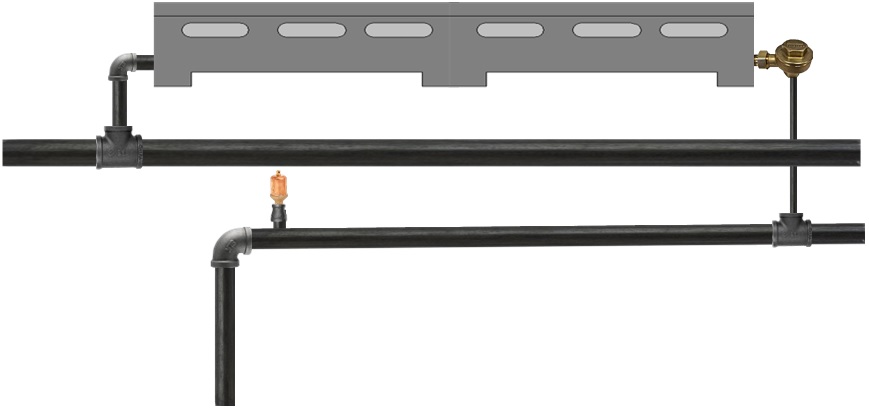
If the installation requires piping the baseboard to a dry return, you could use a steam trap on the end of the radiation. The trap will allow air to pass through, but when steam enters the trap, it will close. When enough condensate accumulates in the trap, it will cool approximately 10°F. The trap will reopen to allow the condensate to exit and then close again. When the live steam enters the trap, the process starts over again. An air vent on the radiation would not be required.
2 Pipe to Dry Return with Pipe Trap w/Air Vent
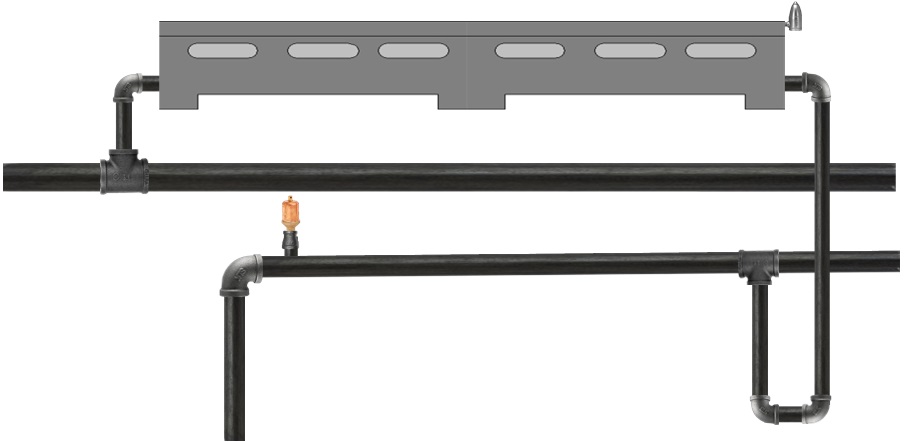
If you do not want to use a mechanical trap on the return side of the baseboard and you have the room, you could create a water seal between the baseboard and the dry return with a piped trap. Steam will not enter the return as it cannot pass through the water seal. Pipe the return side below the dry return and back up to create the required water seal. The water seal must drop 30" per pound of steam pressure below the return connection point. No live steam must enter the return pipe. It will create heating problems in many radiators.
This application would require an air vent on the return side of the radiation.
2 Pipe Trap return condensate to Supply Main w/Air Vent
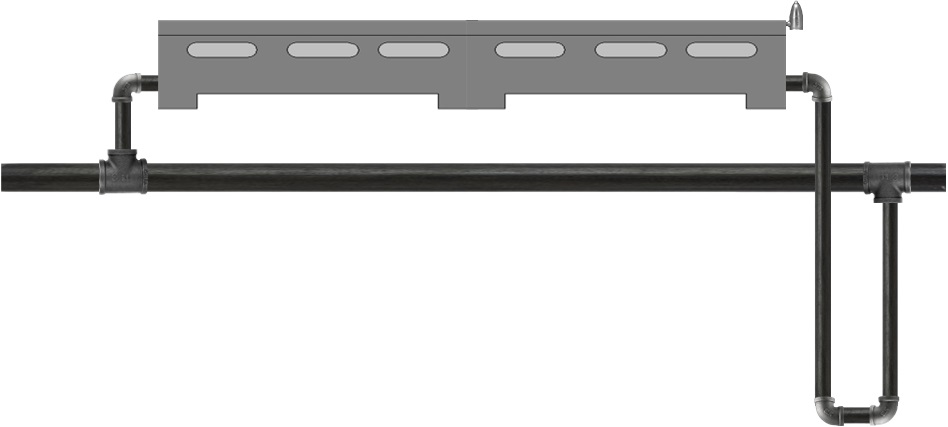
This is the same as above, but the wet seal is returning to the steam main, not the system return. I prefer this drawing to the above drawing, as it results in less water being directed into the steam main, potentially reducing the likelihood of water hammer noises in the system. If you apply this application, it is essential to have good main pipe insulation to help reduce the likelihood of water hammer.
This application would require an air vent on the return side of the radiation.
2 Pipe to wet return Below Water Line w/Air Vent
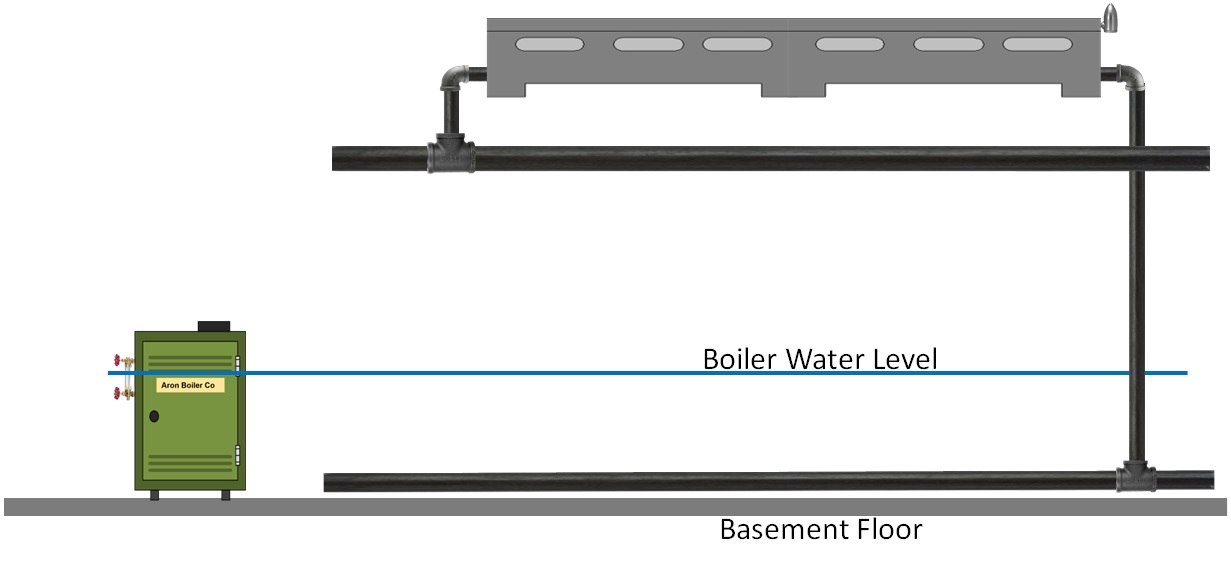
In this last drawing, you would be piping the return side of the cast iron baseboard into a wet return. Verify the connection will always be below the water level of the steam system to create the wet seal. Since water seeks its own level, the water level in the system piping will be equal to the water level in the boiler.
This application would require an air vent on the return side of the radiation.
2 Pipe to wet return Below Water Line w/Alternate Air Vent Location
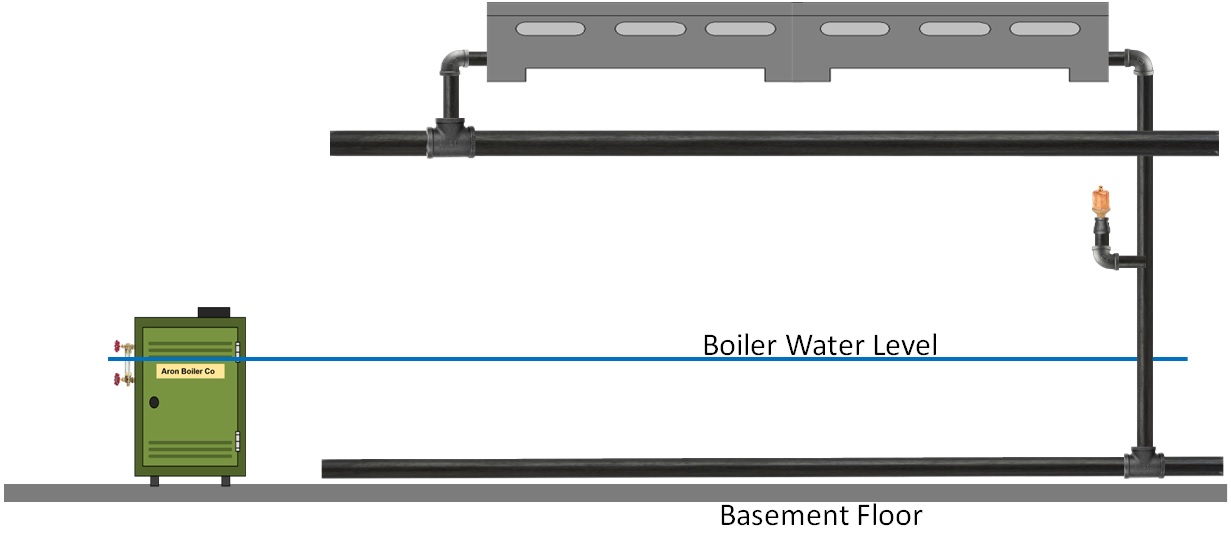
This could be applied to any of the above piping when the vent is required after the baseboard.
Disclaimer: The information found on this website is for informational purposes only. All preventive maintenance, service, and installations should be reviewed on a per-job basis. Any work performed on your heating system should be performed by qualified and experienced personnel only. Comfort-Calc or its personnel accepts no responsibility for improper information, application, damage to property, or bodily injury resulting from the application of information found on this website, as a professional should review it.
